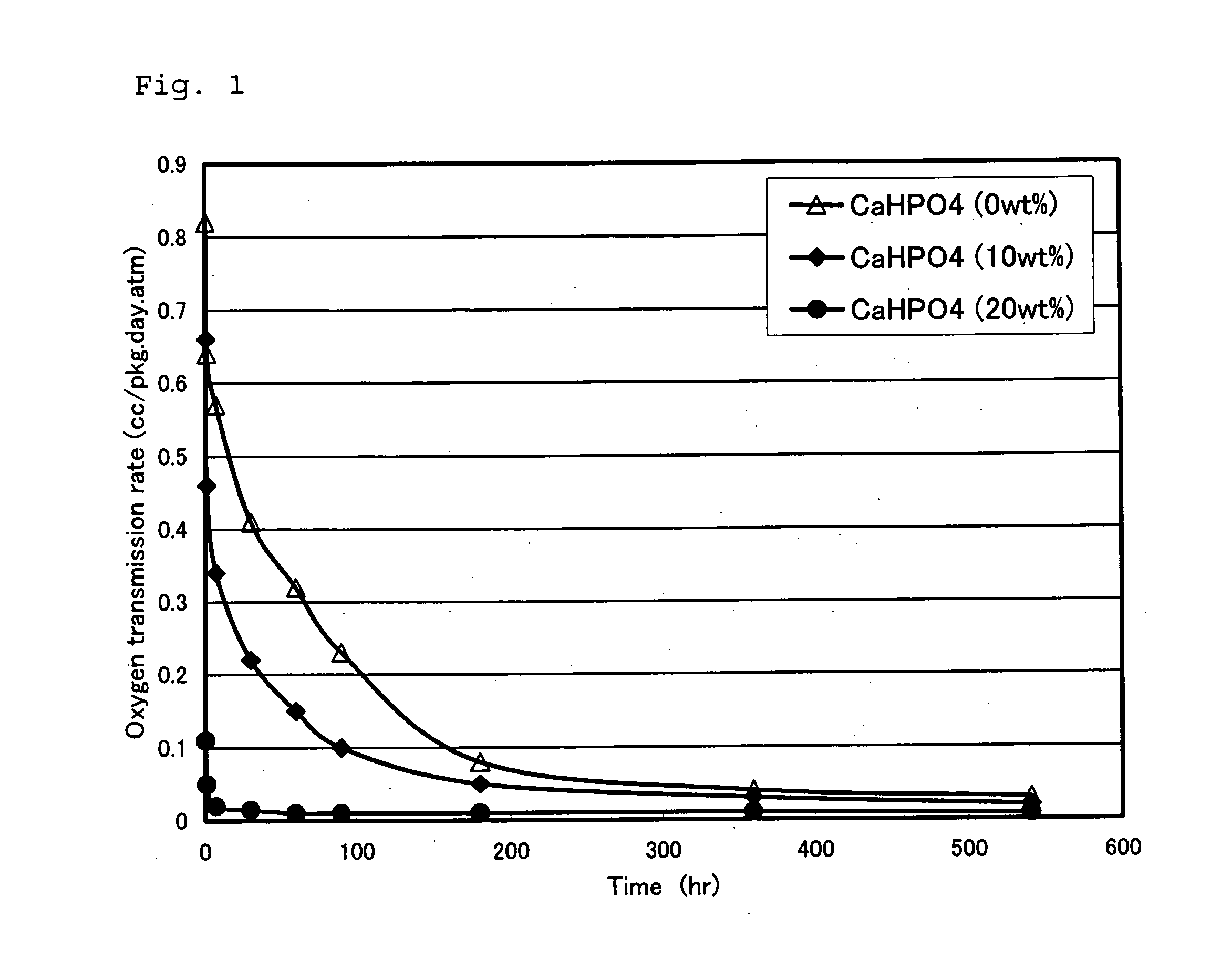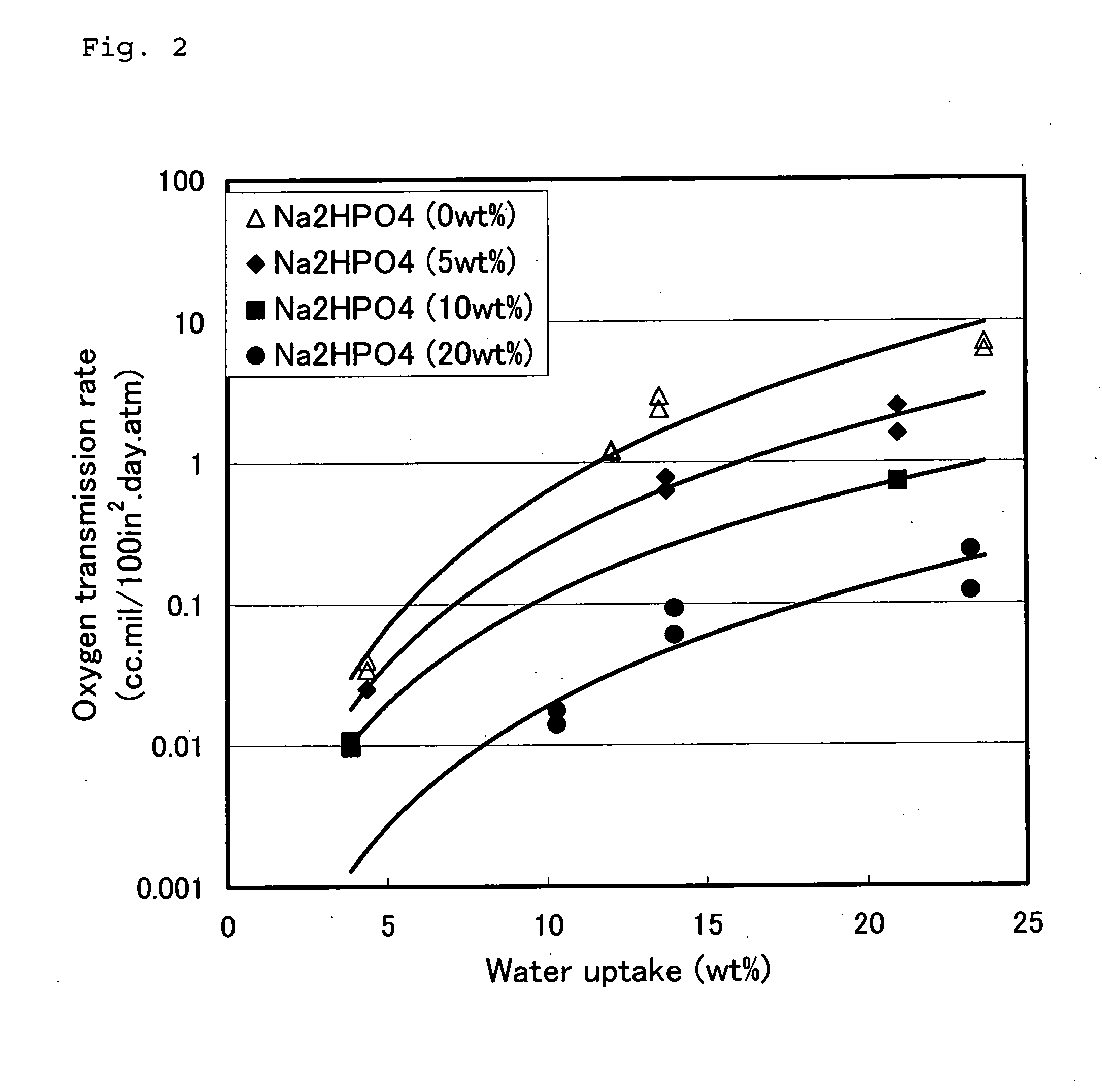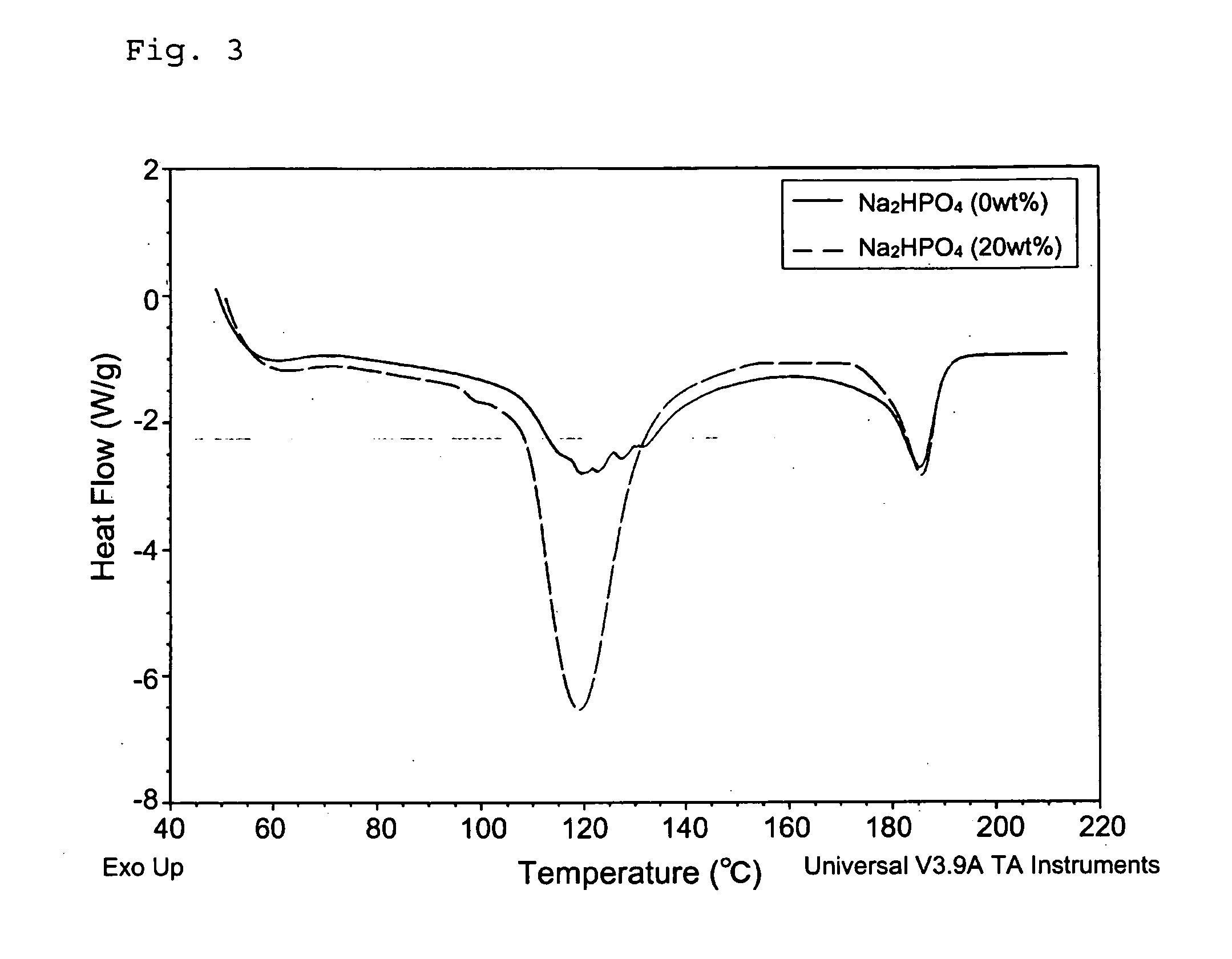Resin composition and multilayer structure
a multi-layer structure and composition technology, applied in the field of resin, can solve the problems of increasing the amount of free volume, increasing the gas diffusivity through the polymer matrix, and greatly reducing the gas barrier properties of the resin
- Summary
- Abstract
- Description
- Claims
- Application Information
AI Technical Summary
Benefits of technology
Problems solved by technology
Method used
Image
Examples
synthesis example 1
[0094]Using a 100 L polymerization vessel which had a cooling coil inside and which was equipped with a four-blade paddle stirrer, continuous polymerization for producing an ethylene-vinyl acetate copolymer was performed. The polymerization conditions are as follows:[0095]vinyl acetate feeding rate: 6.2 kg / hr[0096]methanol feeding rate: 0.5 kg / hr[0097]2,2′-azobis-(2,4-dimethylvaleronitrile) feeding rate as 2.8 g / L methanol solution: 0.3 L / hr[0098]polymerization temperature: 60° C.[0099]ethylene pressure in polymerization vessel: 35 kg / cm2 [0100]mean residence time: 7 hours
[0101]As the result, a polymerization solution with a polymerization ratio of vinyl acetate of about 40% was discharged from the polymerization vessel at a rate of 7 kg / hr. In the polymerization solution, the concentration of ethylene-vinyl acetate copolymer (ethylene content: 27 mol %) was about 40% by weight.
[0102]Immediately after the discharge from the polymerization vessel, a 1.0 g / L β-myrcene solution in meth...
synthesis examples 2 to 9
[0104]EVOHs (A) containing conjugated polyene compounds were prepared in manners similar to that of Synthesis Example 1 using a methanol solution of sorbic acid (Synthesis Example 2), a methyl acetate solution of α-farnesene (Synthesis Example 3), a methyl acetate solution of 2,4-diphenyl-4-methyl-1-pentene (Synthesis Example 4), a methanol solution of eleostearic acid (Synthesis Example 5), a methyl acetate solution of isoprene (Synthesis Example 7), a methyl acetate solution of 1,3-butadiene (Synthesis Example 8), and a methyl acetate solution of styrene (Synthesis Example 9) in place of the methyl acetate solution of β-myrcene of Synthesis Example 1 so that those polyene compounds were added in the same molar amount as that of the β-myrcene in Synthesis Example 1. Further, an EVOH (A) was prepared similarly by using a ⅓ molar amount of a methanol solution of tung oil (Synthesis Example 6). In Synthesis Example 6, tung oil was added in an amount ⅓ the molar amounts of the other po...
synthesis example 10
[0105]An EVOH (A) was prepared in a manner similar to Synthesis Example 1 adding no additives substituting for β-myrcene. The ethylene content, saponification degree and melt flow rate of the resulting EVOH were almost the same as those of Synthesis Example 1.
PUM
| Property | Measurement | Unit |
|---|---|---|
| boiling point | aaaaa | aaaaa |
| particle diameter | aaaaa | aaaaa |
| weight loss onset temperature | aaaaa | aaaaa |
Abstract
Description
Claims
Application Information
 Login to View More
Login to View More - R&D
- Intellectual Property
- Life Sciences
- Materials
- Tech Scout
- Unparalleled Data Quality
- Higher Quality Content
- 60% Fewer Hallucinations
Browse by: Latest US Patents, China's latest patents, Technical Efficacy Thesaurus, Application Domain, Technology Topic, Popular Technical Reports.
© 2025 PatSnap. All rights reserved.Legal|Privacy policy|Modern Slavery Act Transparency Statement|Sitemap|About US| Contact US: help@patsnap.com



